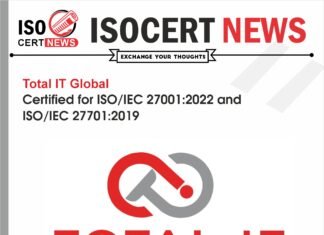‘As a symbol of dedication to quality and the adoption of industry best practices prior to product or service delivery, ISO 9001:2015 certification is essential for every company.’
There is continual improvement in the ISO industry. Growth of 2022’s positive tendencies continued apace in the first months of 2023. The companies that have weathered the storm so far are taking advantage of their increased resilience by utilizing the current crisis as a springboard for future expansion. They have done this to make the most of their improved circumstances.
Insight software, LLC earned ISO 9001:2015 certification, giving the company reason to be proud of its achievements in the future. The ISO Certificates of Accreditation the company has earned are a testament to the company’s dedication to quality and have earned ISOCertNews’ highest praise. Making sure qualified auditors do all necessary inspections throughout certification procedures is one way to improve quality in any firm.
Quality Management (QM) is the practice of systematically applying a set of management tools and procedures to a process with the goal of enhancing it in order to produce consistently high-quality goods and services that satisfy customers while keeping costs low.
This means being well-versed in and using product safety procedures and software. That is why it is important to have a system in place for ensuring and controlling quality, which is why quality management encompasses those processes. To ensure that the final product or service meets the specified requirements, quality assurance (QA) encompasses any, and all efforts made to ensure high standards of production. Suppliers and end-users, both of whom have a stake in the product’s quality, are a primary focus of quality assurance.
Quality control (QC) is concerned with preventing faults from occurring during production. However, the terms “quality assurance” and “quality control” are frequently used interchangeably to refer to the same set of activities undertaken to assure the quality of a product, service, or process.
Companies are more aware than ever before of the value of striving towards and earning ISO certification. Success in business depends on one’s ability to keep a steady flow of satisfied customers coming back. A company’s capacity to consistently deliver high-quality goods and services is enhanced by sustained, rigorous adherence to the ISO 9001:2015 standard. One strategy for accomplishing this goal is to raise consumer knowledge of the dangers associated with low-quality goods and product adulteration.
To supply the greatest Product Lines and Software Solutions to the Organization’s Quality Management System, which includes SIMBA, source connect, source connect cloud, angles for oracle, and angles for sap, is the primary focus of Insight software, LLC regarding the Quality Management System.
Some examples of the ISO standard certifications that other businesses in the same industry are adhering to include ISO 14001 (Environment Management System), ISO 20000-1 (Service Management System), CMMI, ISO 22301, and ISO 45001 (Occupational Health and Safety Management System). Several other companies in the same industry have already attained these certificates.
Besides saving time and lowering barriers to international trade, these certifications provide a firm foundation for the formation of national and international legislation. Therefore, it is imperative that any business planning virtual events follow these guidelines. ISO 22301, which is a component of the business continuity management system, is necessary for businesses of any size since it ensures that company activities will continue even in the event that there are disruptions. As a result, implementing the standard is very necessary.
The International Accreditation Service is one of the accreditation bodies that specializes in dealing with such requirements (IAS). Since its inception in 1975, the International Accreditation Service (IAS) has granted accreditation to a wide range of organizations, including those that fall under the categories of public, private, and not-for-profit sectors.










